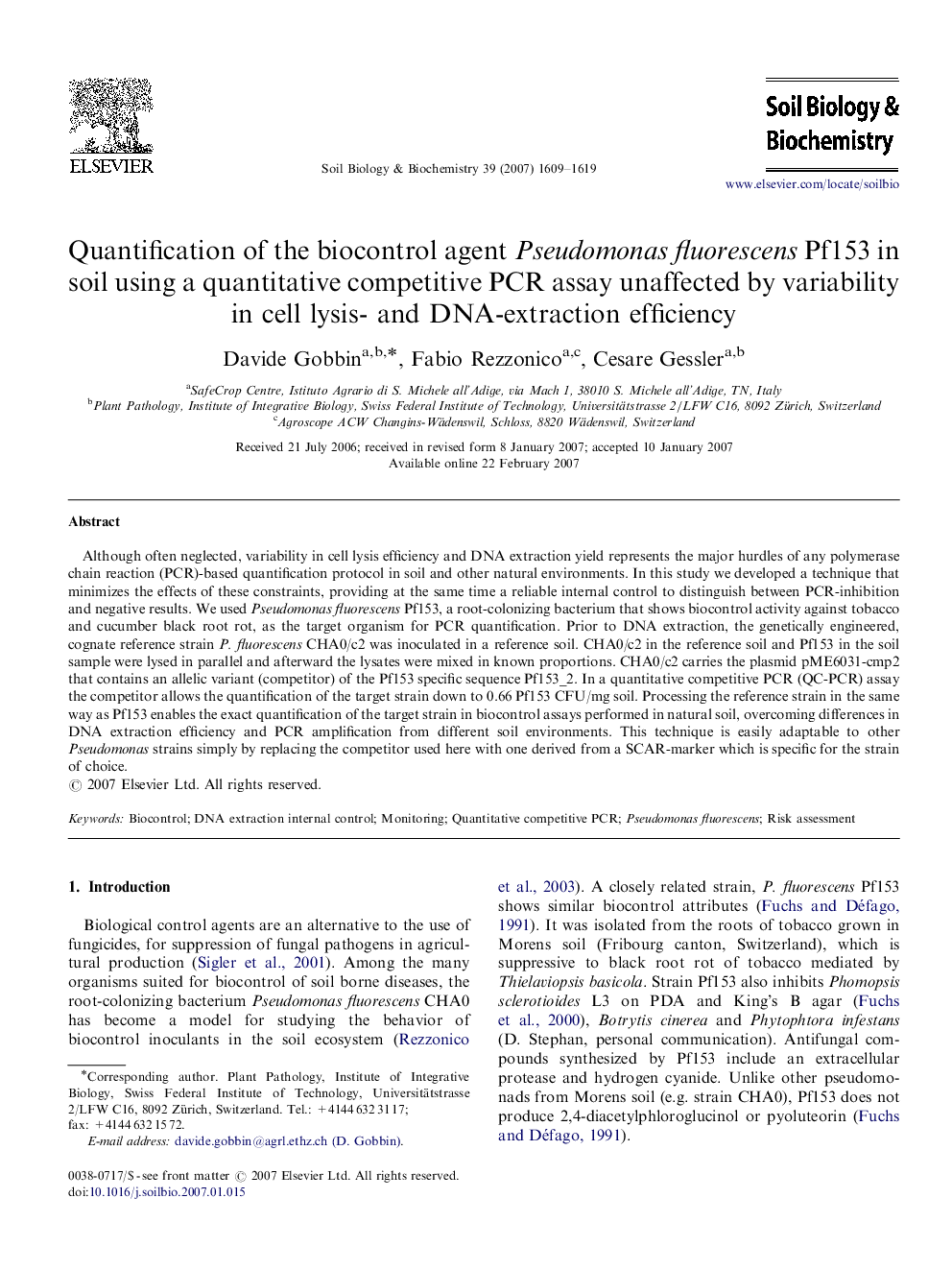| Article ID | Journal | Published Year | Pages | File Type |
|---|---|---|---|---|
| 2026225 | Soil Biology and Biochemistry | 2007 | 11 Pages |
Although often neglected, variability in cell lysis efficiency and DNA extraction yield represents the major hurdles of any polymerase chain reaction (PCR)-based quantification protocol in soil and other natural environments. In this study we developed a technique that minimizes the effects of these constraints, providing at the same time a reliable internal control to distinguish between PCR-inhibition and negative results. We used Pseudomonas fluorescens Pf153, a root-colonizing bacterium that shows biocontrol activity against tobacco and cucumber black root rot, as the target organism for PCR quantification. Prior to DNA extraction, the genetically engineered, cognate reference strain P. fluorescens CHA0/c2 was inoculated in a reference soil. CHA0/c2 in the reference soil and Pf153 in the soil sample were lysed in parallel and afterward the lysates were mixed in known proportions. CHA0/c2 carries the plasmid pME6031-cmp2 that contains an allelic variant (competitor) of the Pf153 specific sequence Pf153_2. In a quantitative competitive PCR (QC-PCR) assay the competitor allows the quantification of the target strain down to 0.66 Pf153 CFU/mg soil. Processing the reference strain in the same way as Pf153 enables the exact quantification of the target strain in biocontrol assays performed in natural soil, overcoming differences in DNA extraction efficiency and PCR amplification from different soil environments. This technique is easily adaptable to other Pseudomonas strains simply by replacing the competitor used here with one derived from a SCAR-marker which is specific for the strain of choice.
